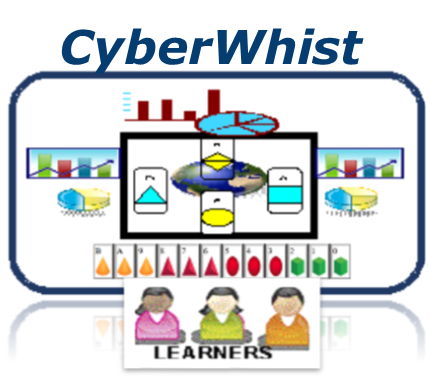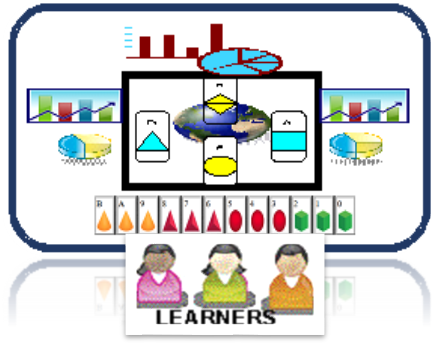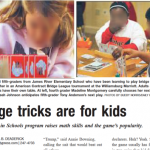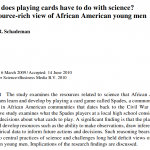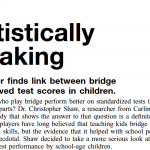Learning Computational Thinking (CT) is implicitly contextual, requiring the opportunity for practice. In gameplay, interest and learning are a self-perpetuating result of practice and competitive engagement.
CyberWhist is a web-based adaptation of the gameplay rules and mechanics of a set of Classic Whist derived card games, such as Bridge, Euchre, Spades, and BidWhist. It is a simulation purposed to leverage the Whist games’ universal appeal and cognitive elements, for use as a field (domain) for Learners to practice Computational Thinking (CT).
Most significant is a novel game presentation that infuses mathematical data representations into the gameplay, while mitigating issues related to the acceptance of traditional playing cards for learning. The result incorporates the functionality required to accentuate the game’s cognitive elements while retaining the aspects of the game mechanics that motivate gameplay.
Whist games consist of four players, two in partnership. In CyberWhist, the web app simulates three of the four players, and the Learner’s manual play or submitted code serves as the fourth player. The Leaner’s CT practice/challenge is to iteratively use manual gameplay to develop game-winning strategies and to encode the results to automate/replicate the Learner’s manual gameplay.
CyberWhist For CT
Cyberwhist leverages the benefits of playing Whist games to serve as the domain for a Learner’s acquisition of the “Disciplinary Knowledge” [Fred Martin 2018] and as the framework to automate gameplay developments[Cuny, Snyder, Wing, 2010].
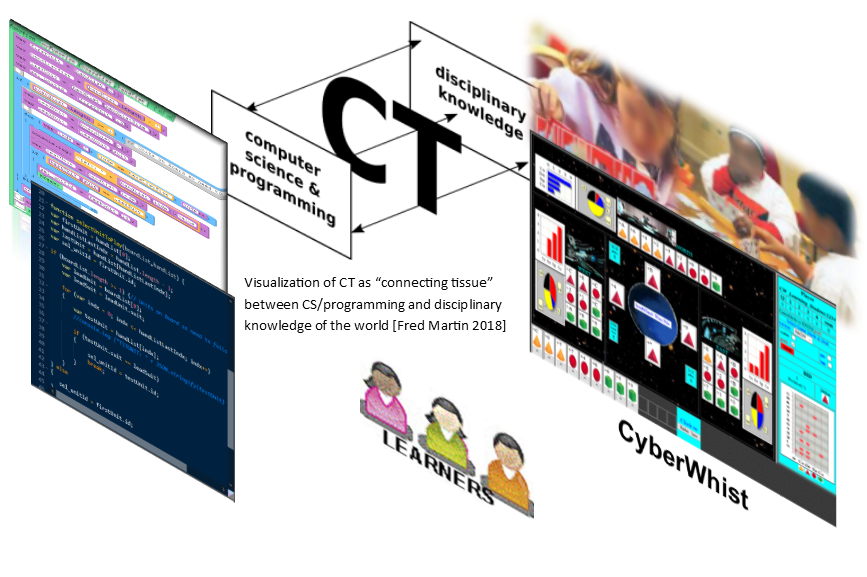
Research indicates a link between children playing similar classic card games and math and science test scores improvements. The study attributed the results to inferential reasoning practices, such as the ability to make observations, draw inferences, and use empirical data to inform future actions and decisions [Resources referenced below].
CyberWhist GameBoard
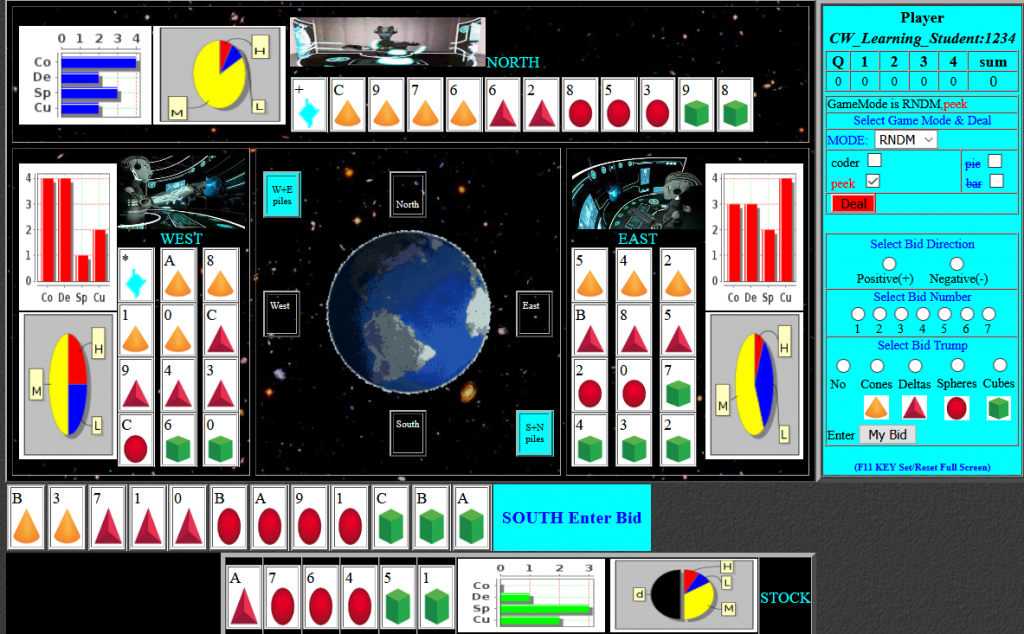
The CyberWhist adaptation offers a version with redesigned cards to address concerns about using traditional playing cards in K-12 educational settings.
From the perspective of the learner, the modified game presents a “MetaWhist Space view” of a tactical engagement. The cards, now called UNITS, feature the four suits as geometric shapes (Cubes, Spheres, Deltas, Cones) and represent the face values with thirteen tridecimal numbers (0-9, A, B, C) signed as Positive or Negative. This design aims to familiarize learners with numbering systems used in computer science technologies in a straightforward manner.
Additionally, the CyberWhist adaptations include a unique game presentation that integrates mathematical data representations like bar graphs, pie charts, and tables into “play by play” dashboards. These dashboards provide critical game data that learners can use to make strategic decisions. The goal is to encourage learners to develop data analysis skills that are essential for making informed decisions, directly impacting their ability to perform in the game.
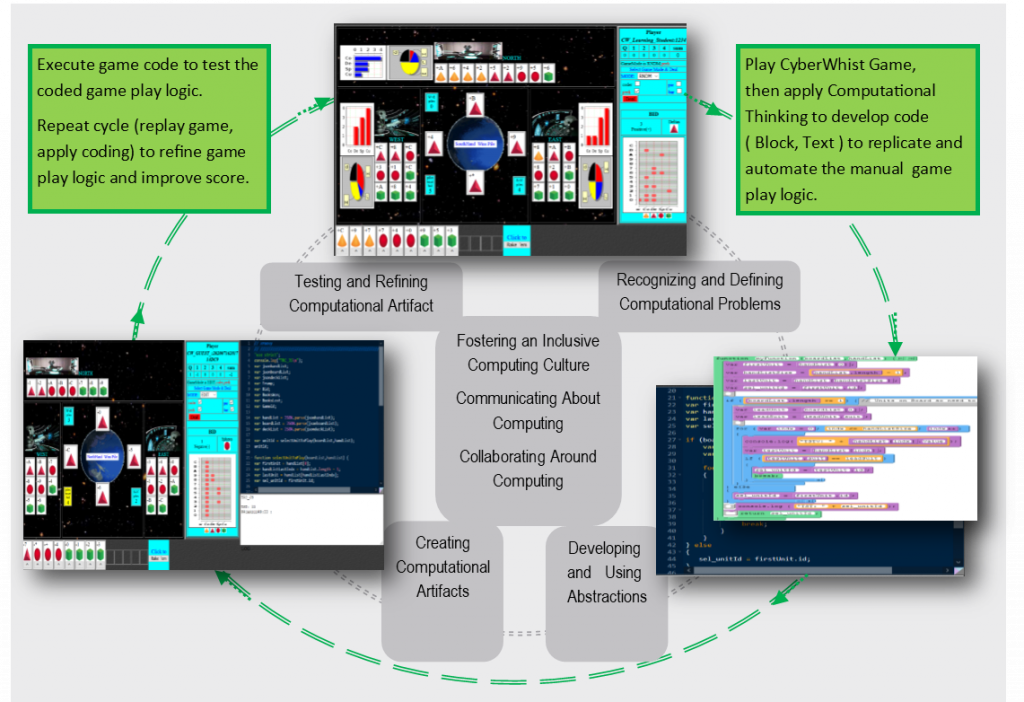
CyberWhist as a Coding and Computational Thinking Tool, In a USE-MODIFY-CREATE spiral
The CyberWhist gameplay inherently features simple rules and varied discrete game conditions, which necessitate the use of conditionals, iterators, and heuristics. All these elements offer structured opportunities to apply computational thinking (CT) approaches.
The initial CT challenge for learners is to manually develop game-winning strategies and then encode these strategies to create an automated version of their gameplay. Successive iterations of gameplay aim to refine these strategies and their coding, leading to enhanced CT competency for the learner.
Resources/References
Computational Thinking: What and Why?Researcher finds link between these games academic skills improvement:
- Bridge Tricks Are For Kids – The Bridge in Schools program raises math skills and the game’s popularity.
- Spades Research – The study examines the resources related to science that African American young men learn and develop by playing Spades.
- Statistically Speaking – Researcher finds link between Bridge and improved test scores in children.
- Rethinking Computational Thinking
- Computational Thinking: What and Why?
- Computational Thinking Tools
- K–12 Computer Science Framework (k12cs.org)
- code.org
Bridge Tricks are for Kids - The Bridge in Schools program raises math skills and the games popularity.
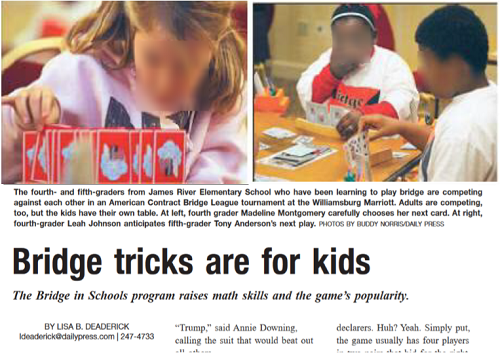
Spades Research - The study examines the resources related to science that is learned and developed by playing Spades.
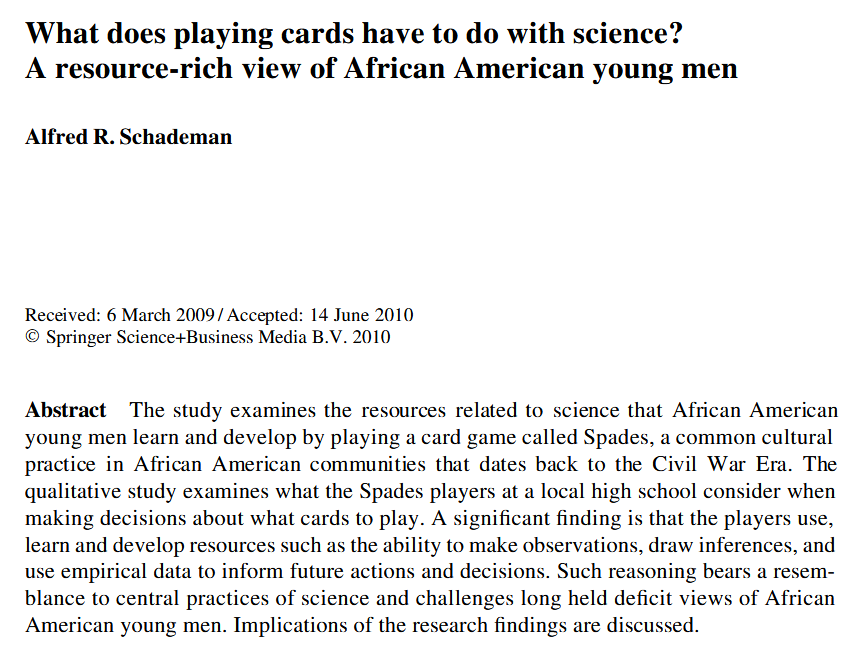
Statistically speaking - Researcher finds link between bridge and improved test scores in children
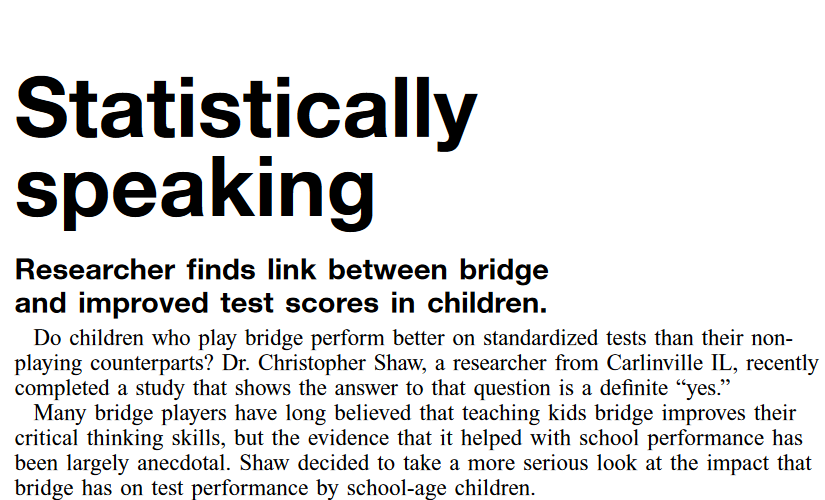
Rethinking Computational Thinking
Posted on February 17, 2018 by Fred Martin
Rethinking Computational Thinking
Computational Thinking: What and Why?
Jeannette M. Wing17 November 2010
https://www.cs.cmu.edu/~CompThink/resources/TheLinkWing.pdf
Computational Thinking Tools
Repenning, Alexander & Basawapatna, Ashok & Escherle, Nora. (2017). Principles of Computational Thinking Tools. 10.1007/978-3-319-52691-1_18.
https://www.researchgate.net/publication/316442849_Principles_of_Computational_Thinking_Tools
